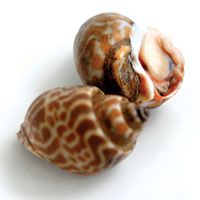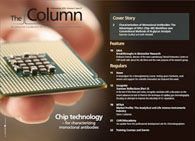Paralysing snail proteome studied
The mechanism that allows sea snails to inject their victims with paralysing venom has been uncovered by proteomic analysis of the creature?s highly specialized biology.

The mechanism that allows sea snails to inject their victims with paralysing venom has been uncovered by proteomic analysis of the creature’s highly specialized biology. There are cone snails in shallow waters of the tropics and warm seas that possess a harpoon-like radula tooth that they propel into their victims at around 400 mph, before pumping paralytic venom into the prey and consuming it with a largely expanded mouth. To study the mechanism that allows the snail to force the venom into the prey, researchers performed proteomic analysis on the venom bulb, a muscular oval-shaped sack, at one end of the venom gland. Their study was published in the Journal of Proteome Research.1
The bulb proteomes of two Australian cone species were analysed by two-dimensional gel electrophoresis and liquid chromatography−tandem mass spectrometry. According to the study, protein profiling clearly demonstrated a role of this organ in motor activity and also suggested that it is capable of rapidly contracting as it contains high abundances of proteins including arginine kinase. Arginine kinase is a protein that enables squid and scallops to swim away from danger with extreme speed and its abundance in the bulb suggests that the venom bulb can undergo rapid, repeated contractions. The researchers hypothesize that repeated contractions of the bulb along with a relaxation of the proboscis leads to a sudden ballistic discharge of the tooth; ongoing contractions then fill the tooth with venom.
1. H.Safavi-Hemami, J. Proteome Res., on-line 6 September 2010.
This story originally appeared in The Column. Click here to view that issue.

New Method Explored for the Detection of CECs in Crops Irrigated with Contaminated Water
April 30th 2025This new study presents a validated QuEChERS–LC-MS/MS method for detecting eight persistent, mobile, and toxic substances in escarole, tomatoes, and tomato leaves irrigated with contaminated water.
University of Tasmania Researchers Explore Haloacetic Acid Determiniation in Water with capLC–MS
April 29th 2025Haloacetic acid detection has become important when analyzing drinking and swimming pool water. University of Tasmania researchers have begun applying capillary liquid chromatography as a means of detecting these substances.

.png&w=3840&q=75)

.png&w=3840&q=75)



.png&w=3840&q=75)



.png&w=3840&q=75)









